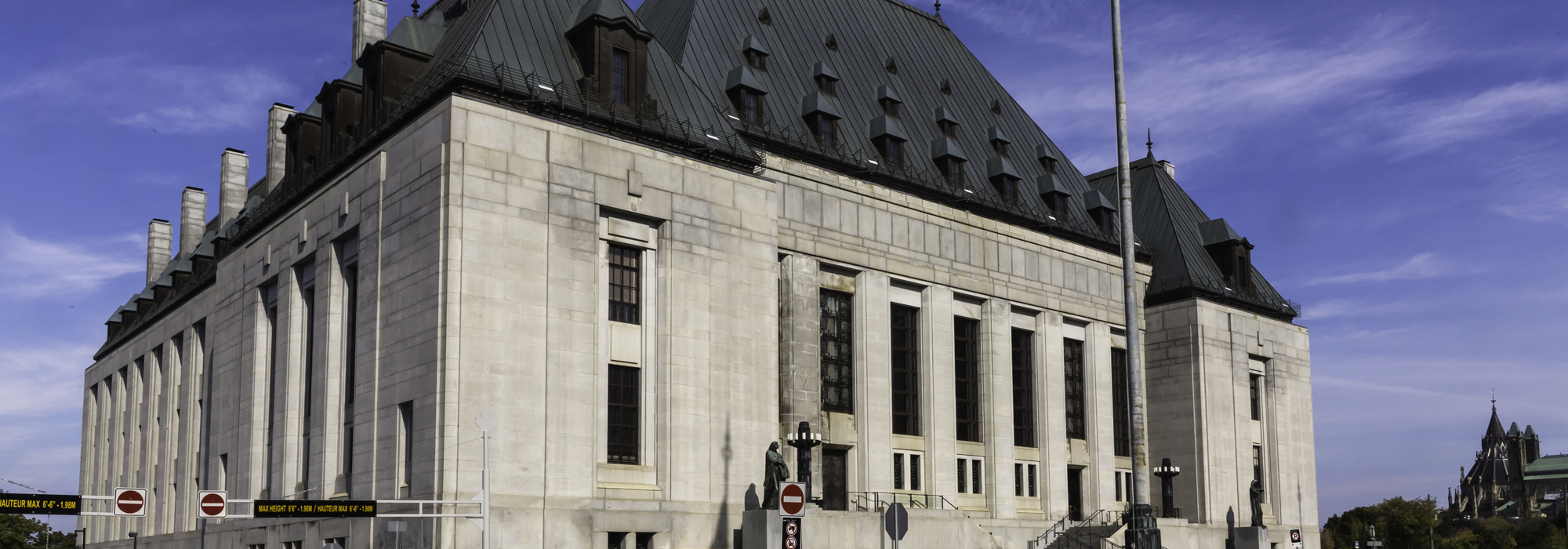
In 2006, outgoing Prime Minister Paul Martin claimed that Stephen Harper would “pack” the Supreme Court of Canada with judges who would “roll back” the Charter of Rights and Freedoms. Harper put it in more gentle terms, stating that he would choose candidates for the Supreme Court who would interpret and apply, but not rewrite, the government’s laws. Five years later, Globe and Mail justice reporter Kirk Makin wrote about “The coming conservative court” and speculated how Harper might reshape the judiciary. Harper’s appointees have formed a majority of five since October 2012, and today only two of nine Supreme Court of Canada judges were not named by this prime minister.
As yet the Charter has not been rolled back – far from it, as a number of uncomfortable setbacks for the government attests. With five of the prime minister’s appointees on the panel, the Supreme Court voted 9-0 in 2013 to invalidate several Criminal Code provisions on prostitution-related activities. In early 2015 and with six Harper appointees sitting on the appeal, the Court unanimously invalidated criminal prohibitions relating to assisted suicide, once again by a 9-0 vote. In both instances, the judges appointed by Prime Minister Harper could have but chose not to roll the Charter back.
There is more. In 2014, another unanimous decision by eight judges, involving five Harper appointments, turned back the government’s proposals for Senate reform. Four of five judges on a panel of seven also went against the government in the Appointment Reference, and reached the extraordinary conclusion that their colleague Justice Marc Nadon – who was already sworn in – had not been legally appointed. Meanwhile, and although with notable dissents, the Supreme Court stepped up its interpretation of the Charter in its early 2015 jurisprudence, with decisions enforcing and extending constitutional rights on labour relations, religious freedom, criminal justice and other issues.
After all that there is still more. Relations between the Court and the government were profoundly affected by the failed Nadon appointment and the outcome in the Appointment Reference. That is before the fallout from his ill-advised attack on Chief Justice Beverley McLachlin further hardened the Prime Minister. After the Globe and Mail published the short list that led to Justice Nadon’s appointment, Harper shut down what was already a modest parliamentary process and returned the matter of Supreme Court appointments to the back rooms. Those who had fretted that a process aimed at introducing a measure of transparency and accountability would politicize appointments are hard-pressed to imagine a process more political than the one we have reverted to now.
In recent months Harper has more overtly shown his determination to “pack” the courts with judges who vocally defend conservative positions and are known for their ideological convictions. This is evident in the lower courts and in the Supreme Court, with the appointment of Russell Brown to replace Justice Marshall Rothstein. More than a judge who might have conservative leanings, as Justice Rothstein did, Brown has expressed hostility toward a generous interpretation of the Charter and has written dismissive criticisms of the Court’s jurisprudence. His views have been not unfairly described as voluble.
What this foretells is difficult to know. In the United States, where Supreme Court judges have life tenure, Republican presidents learned that it could take many years to put a conservative court in place. In a system where it is readily acknowledged that judges follow partisan lines, it can be irksome when some do not perform as expected. One of history’s great surprises was Earl Warren, the long-time Republican governor of California, who became the most liberal chief justice of all. Some Republican appointees have enjoyed status as “swing” justices who exercise enormous power to tip the balance when the Court’s liberal and conservative blocs are divided 4-4. The best examples are Sandra Day O’Connor and Anthony Kennedy.
Even after appointing seven of the Supreme Court’s judges, Prime Minister Harper has realized that putting a “conservative” court in place is no easy task. Up to now, decision-making in Canada has not been ideological or partisan in nature. True enough, some judges are more “liberal” and others more “conservative,” and tension can certainly build around those poles as it did during the more divisive years of the Joseph Lamer Court. That said, ideology and partisan views have mattered less than divergent conceptions of justice.
Much of the Court’s current stability can be attributed to Chief Justice McLachlin – a 26-year veteran and leader of the Court since 2000 – who sets the tempo for decision-making. Neither liberal nor conservative herself, the Chief Justice models a leadership style that prioritizes collegiality among the judges and a conception of justice that is neutral in terms because it simply and deliberately seeks what is just in the circumstances.
Whether the Supreme Court will shift away from rights and roll the Charter back – and how far that could go in the days and years ahead – remains uncertain. How the Court’s internal dynamics will shift and evolve is unknown, and the upcoming federal election on October 19 is another variable that could affect the institution and its work. More worrying than the prospect of divisions within the Court, a loss of consensus and collegiality, or “conservative” decisions, is the risk that decision-making based on ideology – and not the imperative of justice – might be introduced and legitimized at the Court.







